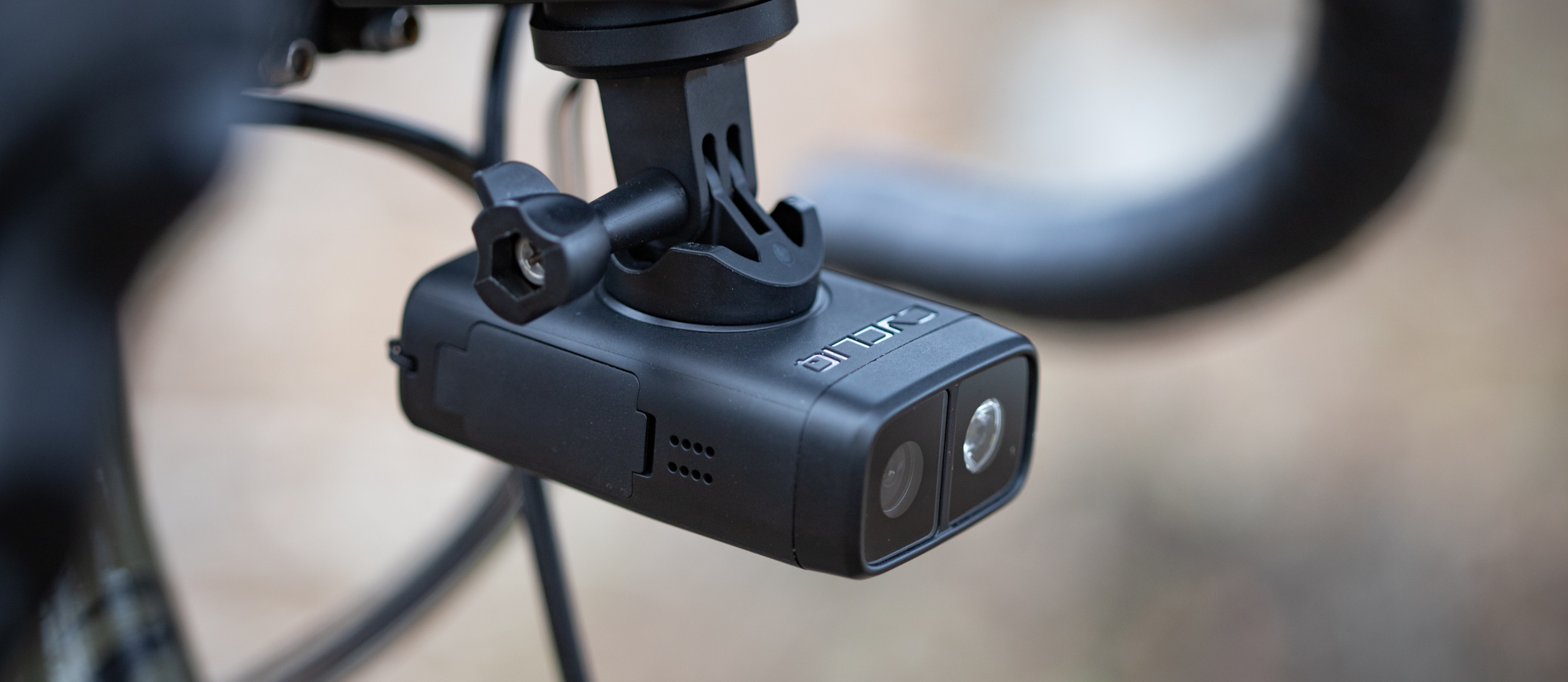Cyclingnews Verdict
Without horizon lock, wireless data transfer, or software editing features, the Cycliq Fly 12 Sport isn't a credible replacement for an action camera but if you are looking for a set-it-and-forget-it just-in-case camera, it's both capable and the only option on the market
Pros
- +
Capable light to get home or add daytime visibility
- +
Orientation for above or below the bars
- +
Blinking LED for confirmation of recording
- +
Long battery life
- +
High-quality video
- +
Six-axis image stabilisation
- +
Software will add Strava overlays
Cons
- -
Lacks wireless data transfer
- -
Editing a video requires separate software
- -
No horizon levelling
You can trust Cyclingnews
A light on the front of your bike is inherently about safety. What that means can take a few different forms. Sometimes you need to make sure you are visible as you ride through the city, and sometimes you need to be able to see where you are going while riding on dark country roads. In both cases, there are a lot of options on our list of the best bike lights available. There is one light that goes beyond visibility though.
The Cycliq Fly 12 Sport has a light but it's also a camera. It is a credible light but it also keeps a record of what you see from the front of your bike. If you are ever involved in a crash, the camera will have your back with a record of what was visible. This is the latest in a long line of models from Cycliq and we wanted to see what it was like to use, so we put it to the test to see where it excelled and where it didn’t. If you have been thinking about a light and front-facing camera on your bike, keep reading to see what we think of this option.
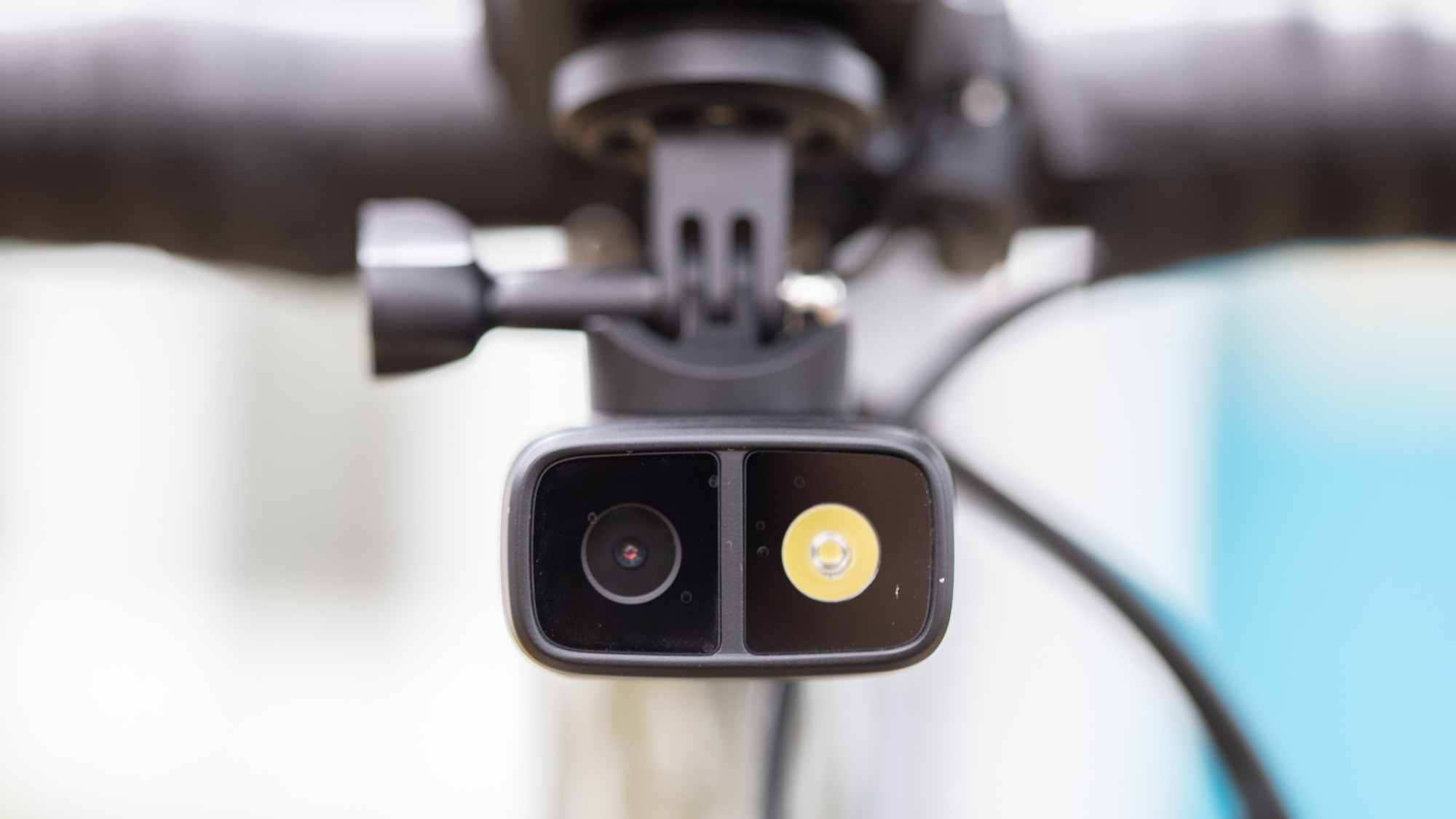
Design and aesthetics
Cycliq isn't a newcomer to the market and it has been following the same basic formula for a number of years. It's about safety but as I said above, it's more than just a light. The idea is active safety and the light is only half the design while a camera is the other half. The Cycliq Fly12 Sport is the newest version of this vision and it brings with it a number of changes on both sides.
The two sides share a visual presence. Look from the front and one side is a single LED light while the other is the lens of the camera. There's obviously been careful consideration to make the two visually match but this latest update downgrades the light a bit and upgrades the camera.
On the light side, that means a drop in power from 600 lumens for the previous version to 400 for the Fly12 Sport. It also means a drop from a 4200 mAh battery to a 3000 mAh but the same recording time of seven hours, as quoted, with the light off. Even with the smaller battery, the burn time on the light has also gone up from four hours to 6.5 hours depending on settings. As before, charging comes via a USB-C port and it will operate while charging.
All the battery changes also mean that the overall size of the unit has dropped. It weighs 151 grams and has an outer size of 80mm long by 51mm wide by 30mm high. It also easily fits in the palm of my hand and side by side with the Giant HL1800 light, it is almost exactly the same size but shorter.
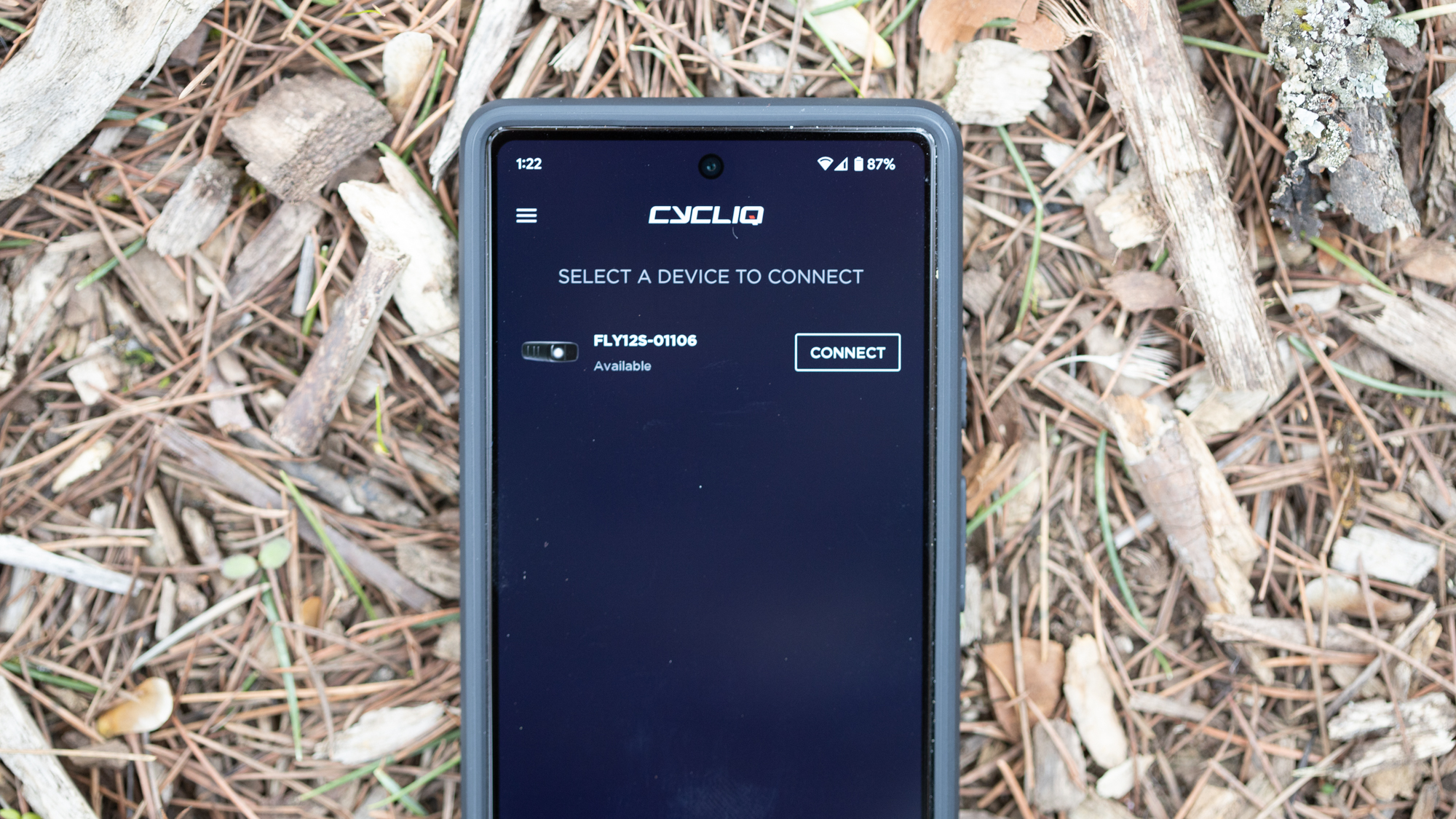
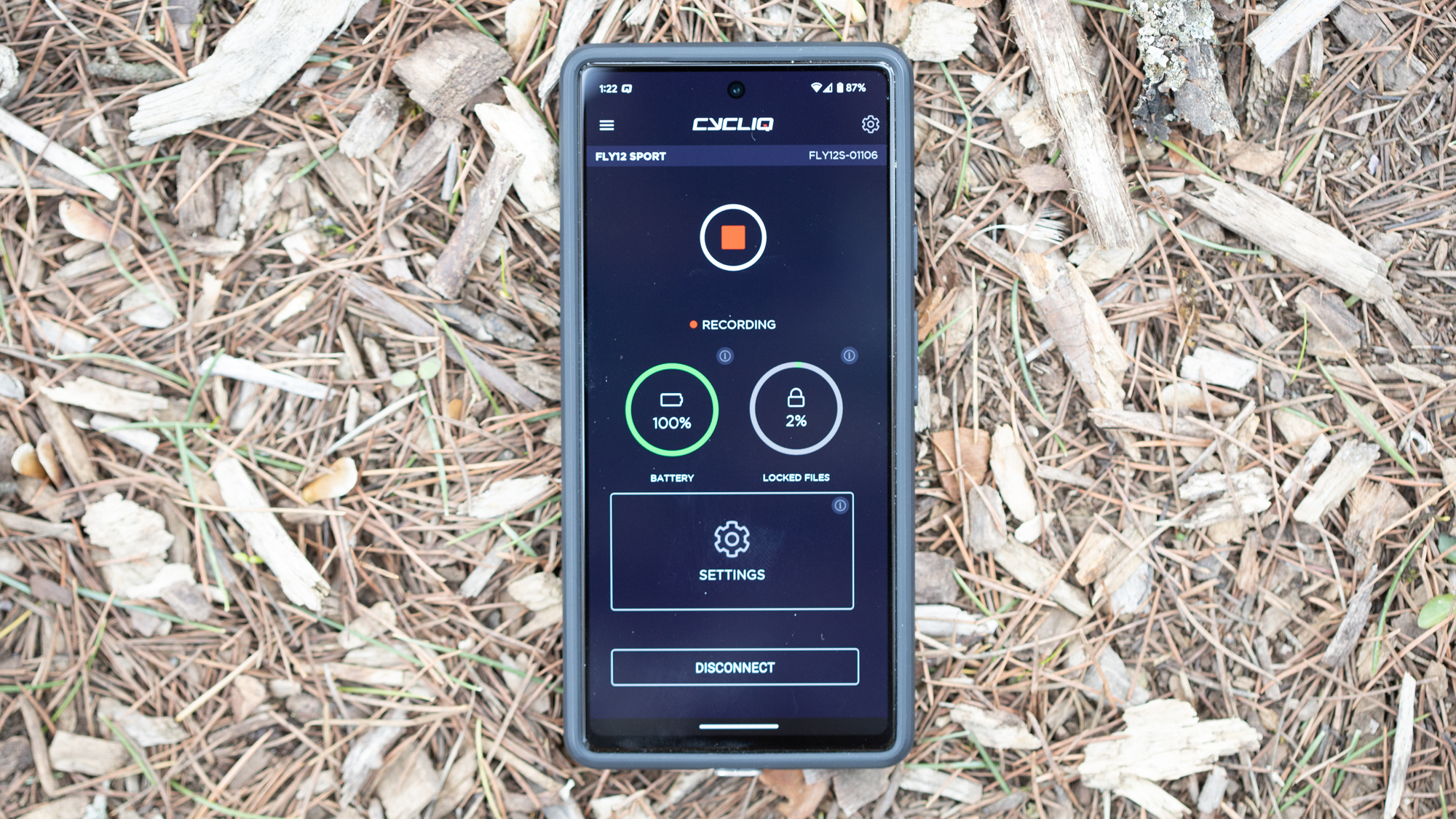
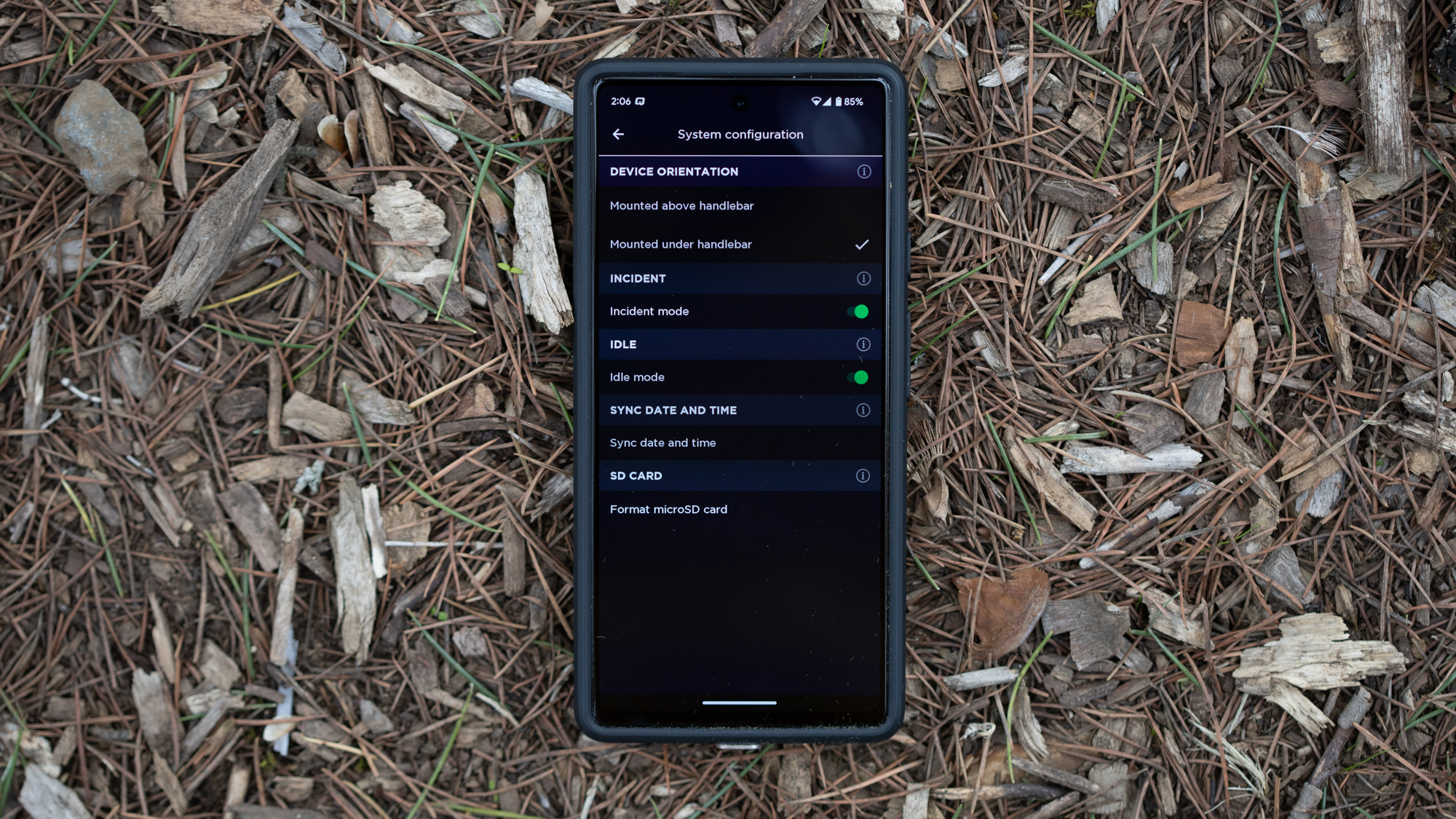
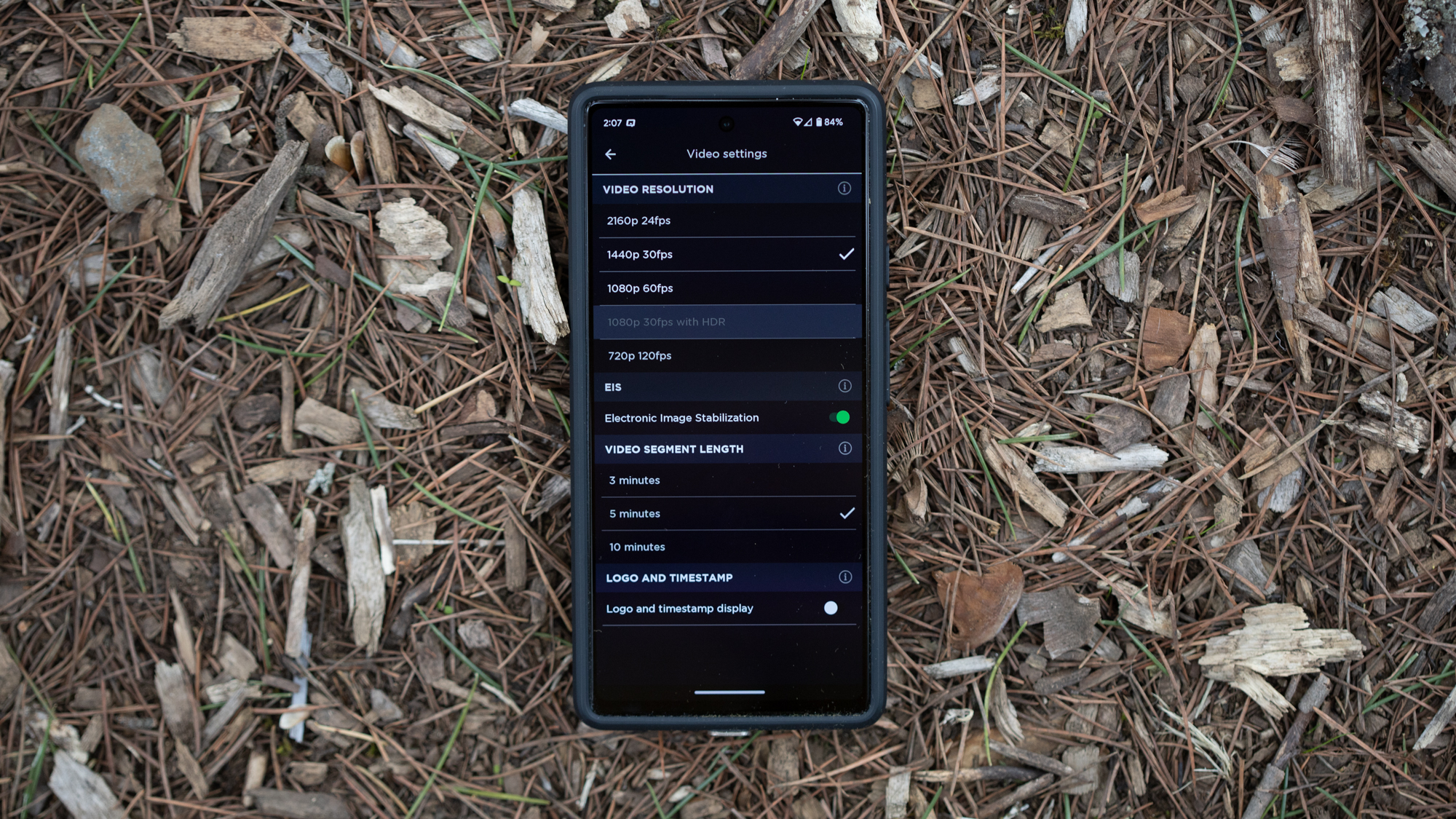
On the camera side, things have gotten an upgrade. It's all internal but the previous max was 1080p while you can now choose 4k recording if you'd prefer. Through the options in the accompanying app, choices on offer include:
- 2880x2160p @ 24fps
- 2560x1440p QHD @ 30fps
- 1920x1080p FHD @ 60fps
- 1920x1080p HDR @ 30fps
- and 1280x720p HD @ 120fps
At the back of the Fly12 Sport, there is a screen but it's for status, adjusting things happens on your phone. In the app, you can adjust the light, choose the video mode, change the sound settings, turn on and off incident mode or idle mode, and sync the date and time. You can also adjust if your mounting is above or below the handlebar and format the included 64GB memory card, although those two options are possible to accomplish with the buttons alone.
The app also makes it look like it might handle video editing and data transfer but it doesn't. There is no wireless data transfer via Bluetooth or Wifi and you can't manage the data that's on the unit either. With an Android phone, you do have the option of uploading/downloading video via Drive but the files are substantial even when you've opted for HD instead of 4k. Primarily the point of the app is to make settings changes.
While we are on the subject of wireless capabilities, there is also no ANT+. You can’t pair the light to a bike computer to control it. The only way to make adjustments to the light is via the app and a Bluetooth connection or when plugged into a computer.
Performance
The first thing you'll need to do is mount the camera. The connection to the bike is proprietary so you'll need to use one of the two options in the box or you could opt for the additional out-front accessory. In the box, you'll find a round bar mount that isn't likely to be usable in a lot of situations. It mounts the Fly12 Sport directly above or below the bar so you'd need to have a front end clear of cables or a head unit. Most people will want to skip that piece and jump over to the action-camera mount.
With the action-camera mount in hand, you've got a pretty flexible mounting arrangement. You can get creative to match your needs but for most people either the Cycliq out-front combo mount, or something from K-Edge, and you'll be all set. What you won't be able to do is figure out the best angle for the 135-degree field of view camera. There's still no ability to interact with the footage on the camera via the phone app so you will need to mount it then look at the footage and make adjustments if necessary.
I expect that almost everyone is going to open the port and connect a USB-C cable from the camera to a computer. The Fly12 Sport will show up as a drive and you can pull the footage off easily enough. If you are doing more than just setting the angle for the first time, there is software available for editing the footage.
The software, at least on Windows, acts exactly like you'd expect the phone app to work except it's with a cable. You can change all the settings, like the app, but you can also watch the videos and delete them. You can import them for editing as well but editing only means adding things like a map and metrics from the Strava file if it exists. There is the ability to add lines to show how close a pass was as well. Overall, the Cycliq Fly12 Sport isn't really an action camera and it lacks most of the features you'd expect from an Insta360 or GoPro. That's not necessarily a negative though.
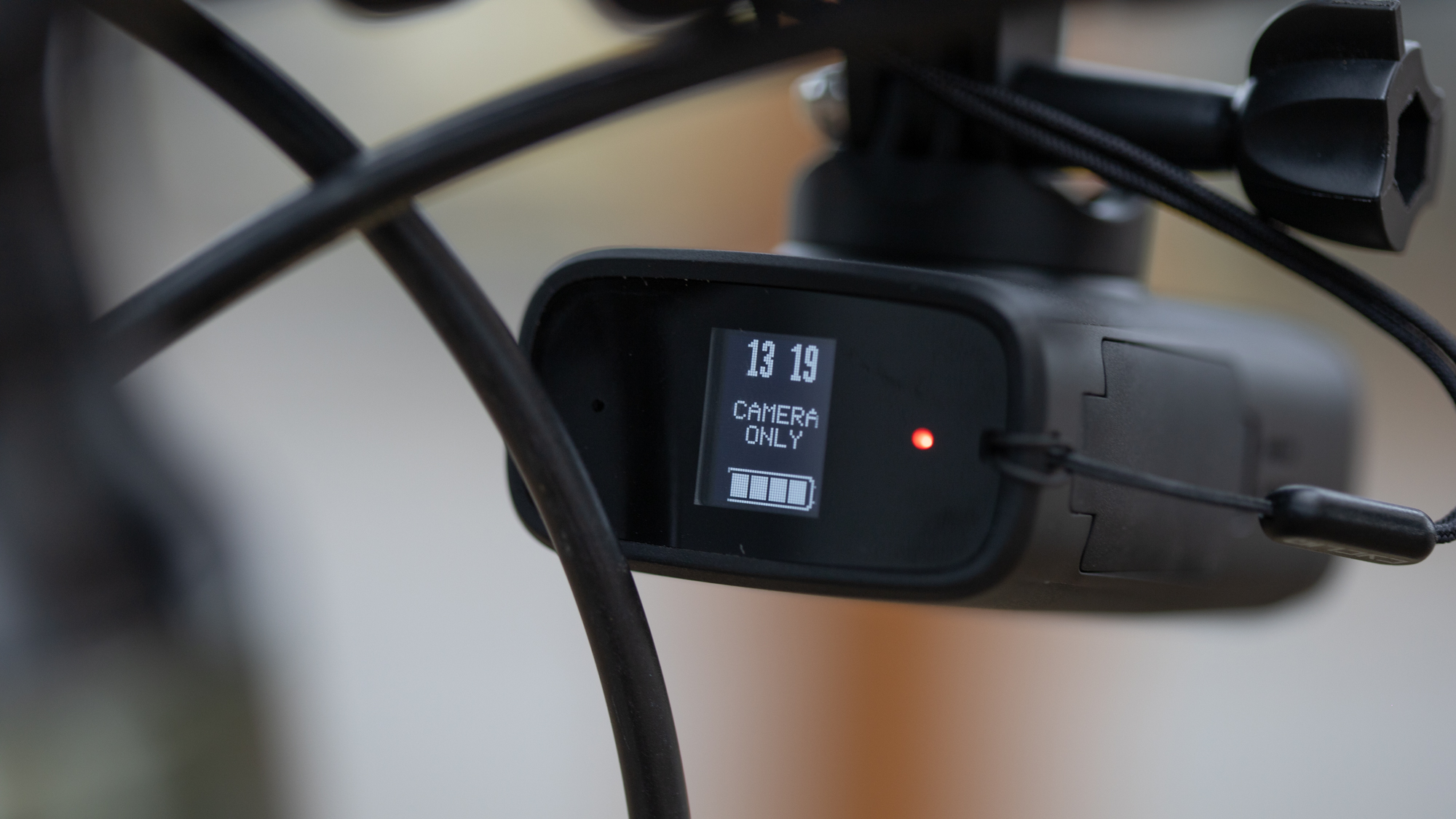
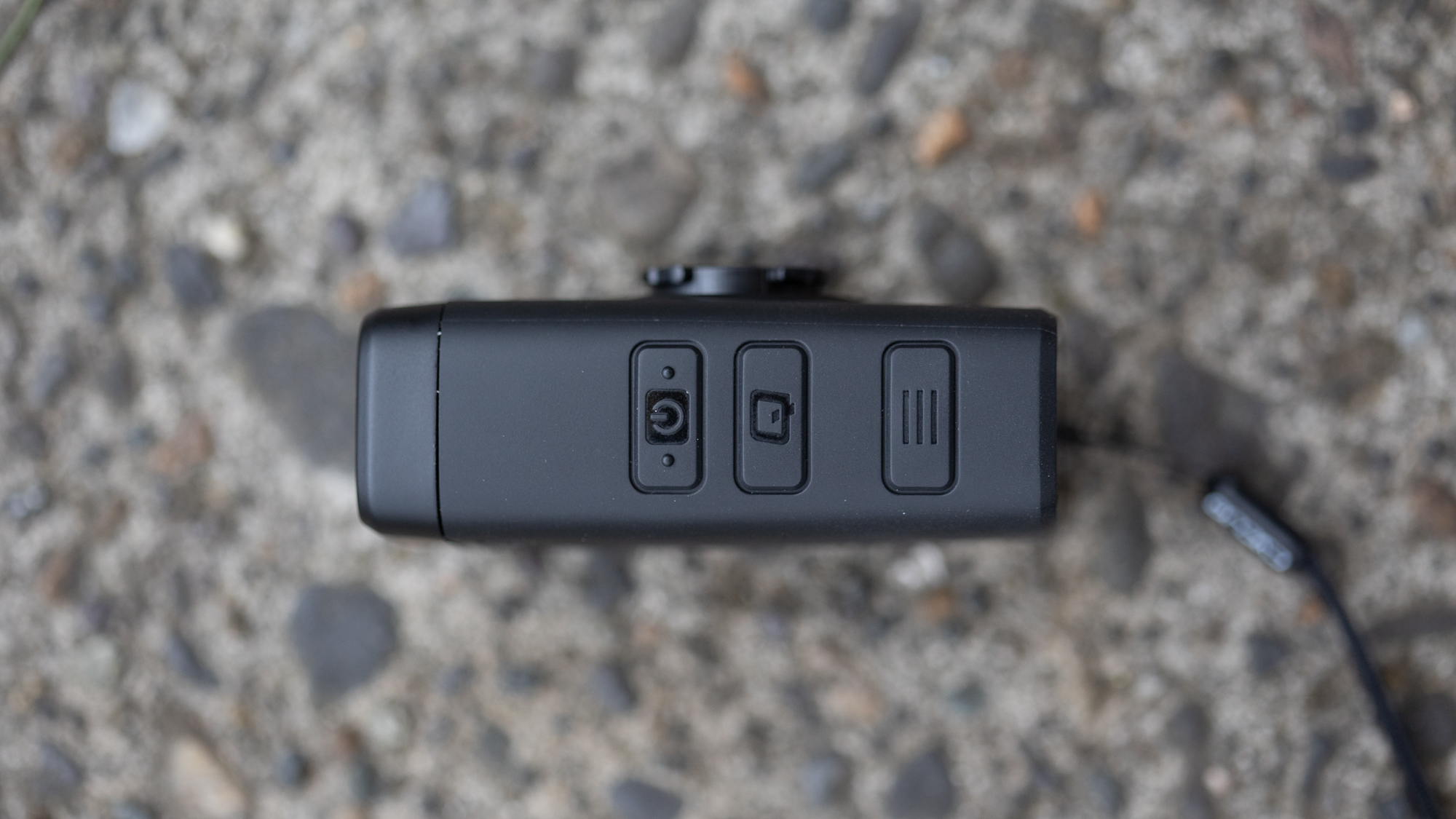
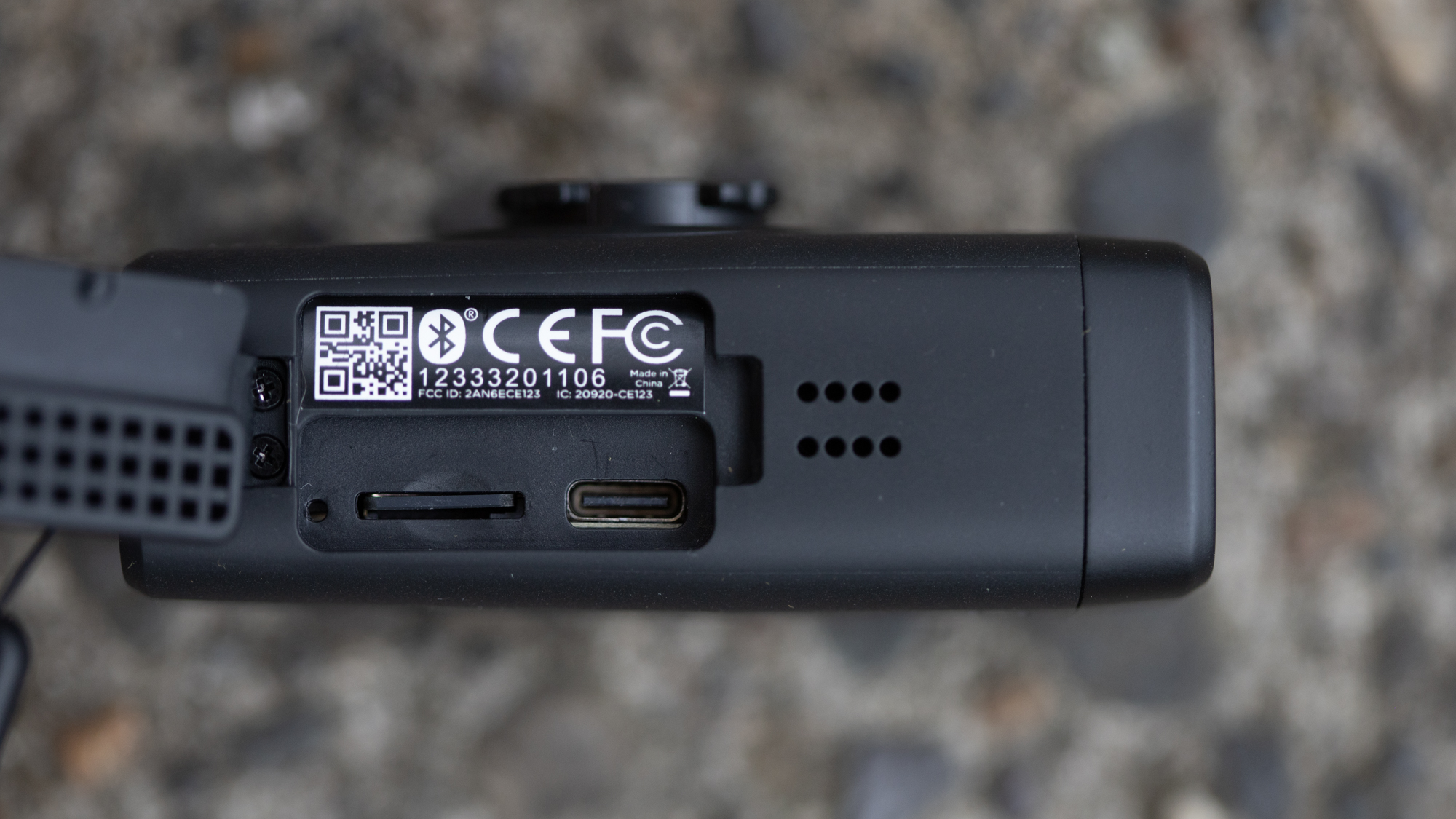
What the Cycliq does is give you a dashcam for your bike and that threads through the entire user experience. This is a set-it-and-forget kind of product. When you leave the house, press the power button and the unit will turn on and start recording. The status screen will make it obvious how much battery life you've got and the blinking record light is a comfort anytime you are unsure.
The light and all the settings will be the same as you set initially. As you ride the files will write to the memory card and when it's eventually full, they will start to rewrite over the first files. The files are standard action camera quality and as long as you manage to get an angle without glare, you can make out number plates with ease. There is working six-axis stability but there's no horizon levelling so, again, it is best used as a record vs an artistic tool. As the light falls, don't have high expectations. The quality is nothing special and the needed light is going to make number plates pretty impossible to read.
If you ever have an issue, the file you are recording, and the one before will automatically lock. The built-in gyroscope triggers this action when it senses a tilt of "more than 60° from vertical (30° from the ground) for more than five seconds." You can also trigger it by pressing the button on the side of the camera whenever you want to save files. Either way, it just changes the name of the file to add "LCK" to the front and continues to record as it was before.
The one thing that’s always difficult to test is long-term reliability. Cycliq seems to have had issues specifically around water ingress on earlier models. The Fly12 Sport carries an IP56 weather resistance rating but it also had a redesign of the cover for the ports. The CE used a hard plastic door while the Sport has a rubber cover. It’s not easy to open the cover and it seals deep into the opening. It looks like it would do just fine even if it wasn’t perfectly closed.
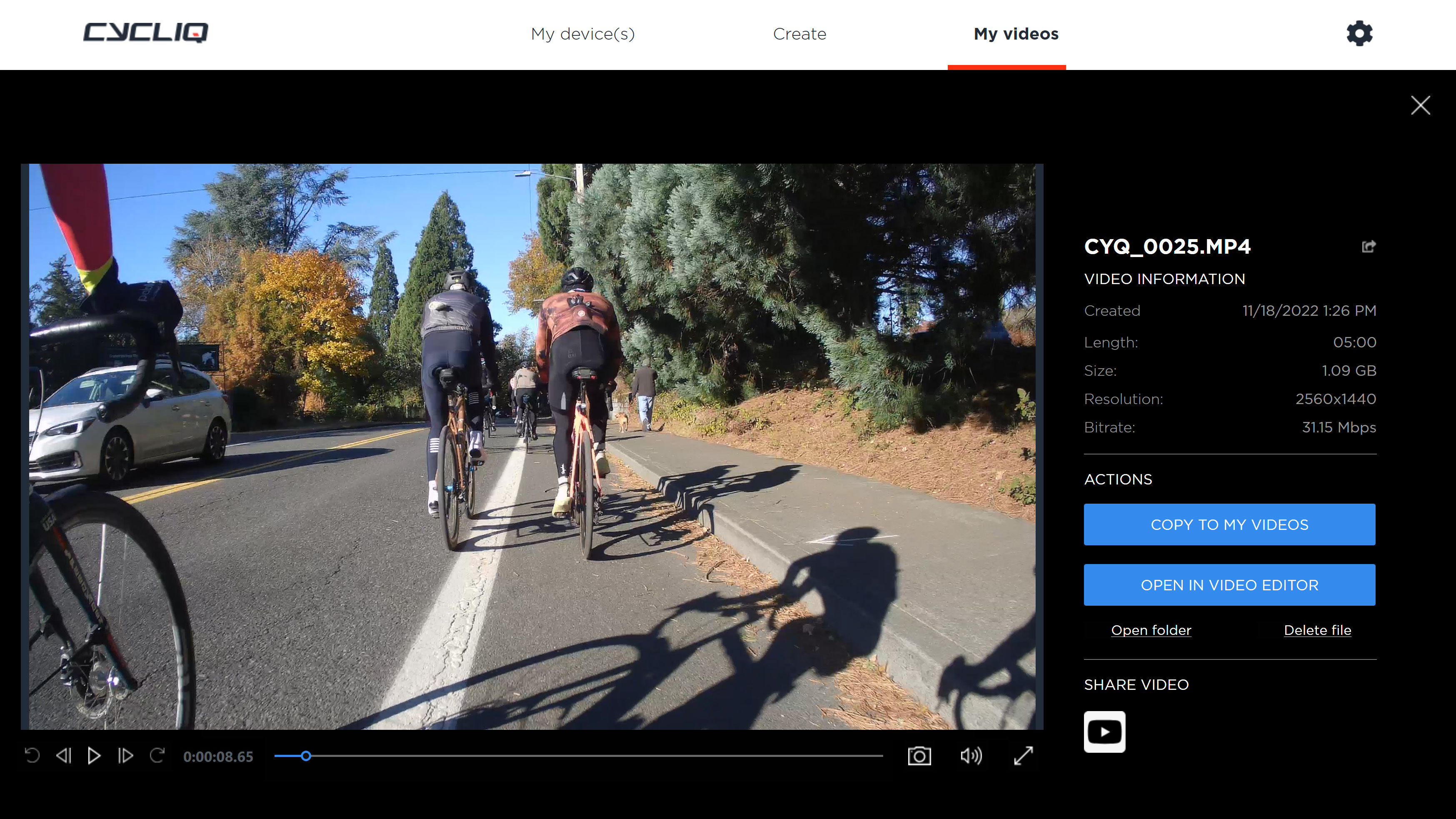
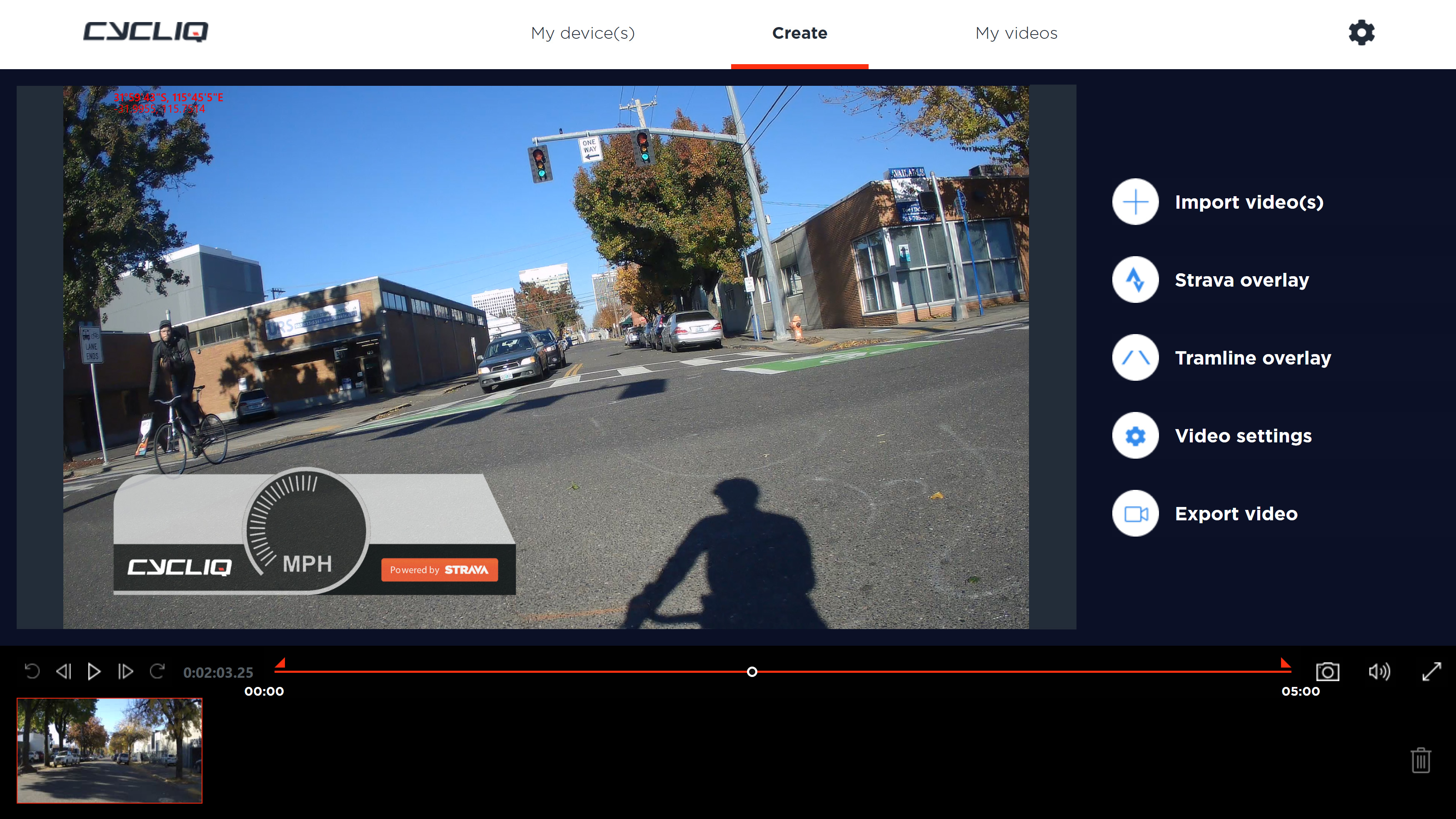
Verdict
What you shouldn't expect from the Fly12 Sport is an action camera. The six-axis stabilisation keeps the footage from being shaky but GoPro, Insta360, and DJI all have horizon levelling. Stand to climb and the Cycliq video will rock back and forth. Then, when it's time to edit your video, you'll need to have your own software to do anything meaningful and it's likely going to need a computer instead of your phone. What an action camera won't have though is the ability to record for seven hours both because of battery life and data storage.
The product page for the Cycliq Fly12 Sport calls it the "dashcam for cyclists" right at the top of the page. There's no indication that what Cycliq is selling is trying to compete with an action camera. As long as you believe the brand, there isn't an issue. You get quality recording, simple ways of seeing the status, and a light that will get you home in an emergency or help you to stay visible in the day. If that's what you need, not only does the Cycliq Fly12 Sport do a good job but it enjoys a market with no competition.
| Design and mounting | The round bar mount needs a bike with no cables or computer in the way but by including an action-camera mount you’ve got all the options you will need. Aside from that, the usage is specific but it works. | 7/10 |
| Light/Video quality | The light is to keep you visible not to see where you are going and the video is standard quality. Everything does what it should. | 10/10 |
| Control Scheme | A dedicated button for adjusting the app would be a welcome addition. | 7/10 |
| Battery life and charging | Excellent battery life both with and without the light plus USB-C charging. | 10/10 |
| Value | There’s no comparison but it’s cheaper than an action camera and more capable at what it does. Pricing seems where it should be but not a bargain. | 8/10 |
| Overall | Row 5 - Cell 1 | 84% |
Tech Specs: Cycliq Fly 12 Sport front light and camera
- Price: £299 / $319
- Weight: 151g without mount (as measured)
- Battery: 3000 mAh
- Water resistance: IP56
- Runtime: 7 hours video only, over 6.5 hours with light (depending on settings)
- Bike camera resolution: 2880x2160p @ 24fps (4K playback), 2560x1440p QHD @ 30fps, 1920x1080p FHD @ 60fps, 1920x1080p HDR @ 30fps, 1280x720p HD @ 120fps
- EIS: 6-axis Electronic Image Stabilisation
- HDR: High Dynamic Range
- Viewing angle: 135° wide angle
- Recording structure: Looping video recording
- Segment size: 1.17GB (5 min segment at 1440p 30fps)
- Video format: MP4
- Max light brightness: 400 Lumen
- Light modes: Solid, Flash, Pulse, and Off
- Supplied microSD card size: 64GB
- Max microSD card size: 256GB
Josh hails from the Pacific Northwest of the United States but would prefer riding through the desert than the rain. He will happily talk for hours about the minutiae of cycling tech but also has an understanding that most people just want things to work. He is a road cyclist at heart and doesn't care much if those roads are paved, dirt, or digital. Although he rarely races, if you ask him to ride from sunrise to sunset the answer will be yes. Height: 5'9" Weight: 140 lb. Rides: Salsa Warbird, Cannondale CAAD9, Enve Melee, Look 795 Blade RS, Priority Continuum Onyx
